Birds and their nests
NRM NEWS - NOVEMBER 2020 - GENERAL NEWS AND PARTNER UPDATES
By David Lindenmayer & Dave Smith
Sustainable Farms, Fenner School of Environment & Society The Australian National University, Canberra, ACT, 2601 www.sustainablefarms.org.au
Access to shelter for raising young is pivotal to the persistence of almost all life on earth. Birds are no exception, and they use a remarkable array of types of nests – including burrows (such as spotted pardalotes), stick nests, nests woven from mosses and bark, mud bowls and tree hollows.
Bird nests can be extraordinarily intricate and complex, scrappy, rushed and messy, or neat and minimalistic, or even nonexistent. Birds like masked lapwings, bush stone-curlews, emus, and black-fronted dotterels don’t even bother building nests and lay their eggs directly on the ground, which they may or may not clear before laying. Wedge-tailed eagles, on the other hand, build enormous nests from very large sticks, which they add to each year. These nests can be 3 metres tall and weigh 400 kilograms. It is not uncommon to see zebra finches and other small birds build their nests within these enormous eagle nests, and it is thought that the presence of the eagles can offer them protection from smaller predators.
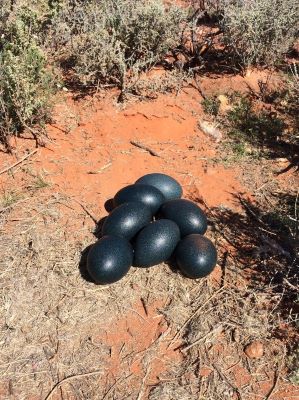
Figure 1: Emu eggs. Photo Dave Smith
Cup nests
The simple cup nests built by birds like robins, fantails and flycatchers are delicately crafted with birds using their beaks like sewing needles to painstakingly stitch bark fibres and leaves together. Cup nests typically use spider web to bind it together and lash it to a branch - golden-headed cisticolas are sometimes called tailorbirds due to their habit of sewing leaves together with spider webs to conceal their nest. These nests sometimes have outer linings of lichens and mosses for camouflage, and they can look incredibly beautiful. Sometimes cup-shaped nests are slung below a branch rather than sitting on top of a fork - many honeyeater nests are constructed in this way.
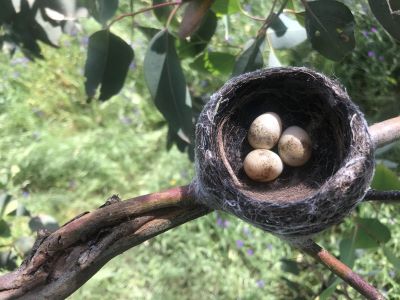
Figure 2: Willie wagtail nest - an example of a cup nest. Photo Dave Smith
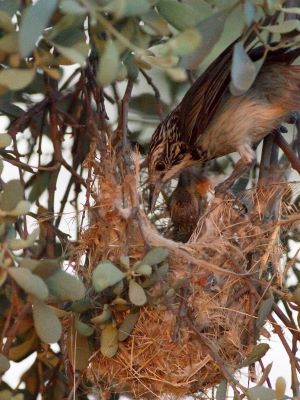
Figure 3: Striped honeyeater nest - an example of a hanging cup nest. Photo Dave Smith
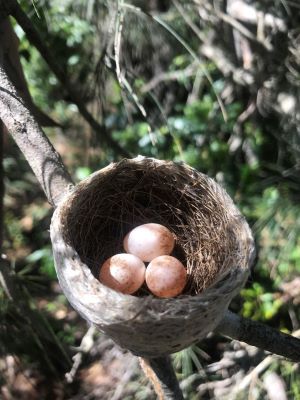
Figure 4: Grey fantail nest - made from allocasuarina leaves and spider web - an example of a cup nest. Photo Dave Smith
Dome nests
Another common nest structure is the domed nest, which is spherical or bottle-shaped with an entrance on the side. Birds like finches, thornbills, and fairy-wrens build these kinds of nests, and they can be commonly found in dense shrubs. Yellow-rumped thornbills build domed nests with a false cup nest on top of the dome. It’s not entirely clear why they do this – possibly as a means of deterring predators who see the ‘empty’ nest and move on.
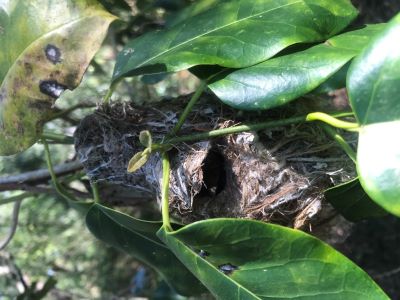
Figure 5: Striated thornbill nest - dome nest with a side entrance. Photo: Dave Smith
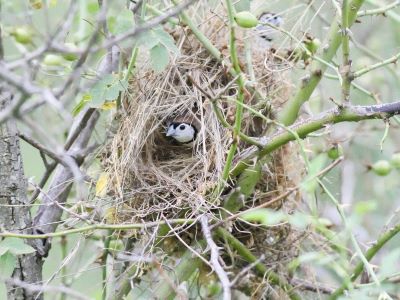
Figure 6: Double-barred finch nest - an example of a dome nest. Photo: Dave Smith
Mud nests
Mud is an excellent material for constructing nests, and several birds use it to build different shaped nests. Magpie larks, white-winged choughs, and apostlebirds build large mud bowls. Welcome swallows build mud nests under rocky overhangs where they can be kept dry. It’s now most common to see these nests under the eaves of buildings, under bridges, or in road-culverts. Fairy-martins build bottle nests from mud, and again these are often seen under built overhangs. Fairy-martins nest in colonies and often attach their nests directly to other nests, sometimes forming large elaborate structures with dozens of nests. Other species, such as pardalotes, sparrows, or even microbats, sometimes use these nests when they are not in use by fairy-martins.
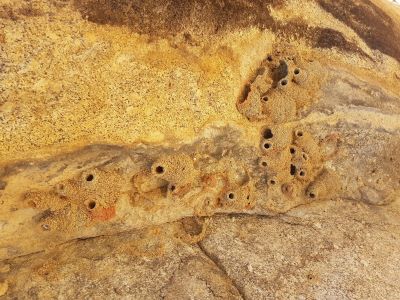
Figure 7: Fairy-martin bottle nests in a rock overhang. If you look carefully you can see smaller mud nests built by mud wasps or potter wasps. Photo: Dave Smith
Waterbirds
Waterbirds sometimes build nests on land, and it often surprises people to learn that many duck species nest in tree hollows. Other waterbirds build nests on freshwater islands or in emergent water vegetation on the fringes of waterbodies. Australasian grebes build brilliant floating nests out of buoyant vegetation which they then anchor to the bottom.
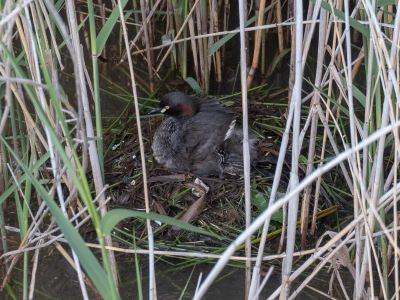
Figure 8: Australasian grebe nest - an example of a floating nest. Photo: Suzannah Macbeth
Nest or not?
Not all structures created by birds are nests, and not all things that look like birds’ nests are created by birds. Bowerbirds are a great example here. Males build astonishing structures that they use as displays of their fitness to impress potential mates, but that is not used for nesting. Other birds, such as white-browed babblers, build diurnal roosts, which they use as resting places during the hotter parts of the day. Ringtail possums make dreys to shelter in, and these structures can be mistaken for bird nests.
Using someone else’s nest…
There are even birds that don’t bother to make their own nests – brood parasitic cuckoos instead lay their eggs in the nests of other birds. The eastern koel, channel-billed cuckoo, pallid cuckoo, shining bronze cuckoo, Horsfield’s bronze-cuckoo, and fan-tailed cuckoo are some of the many examples that live in the Murray LLS region. Indeed, it can be bizarre sometimes to see a pair of adults feeding one of their “young” several times their size – such as adult currawongs feeding a channel-billed cuckoo chick. The image and text message below from a friend show exactly this.
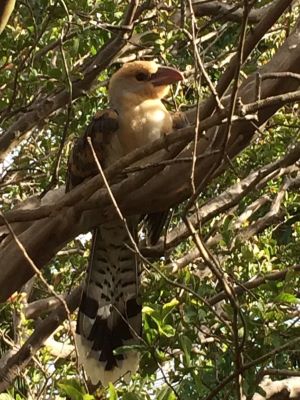
Figure 9: Photo sent in to one of the authors with the message - this bird is currently outside our house, we don’t know exactly what it is (we looked it up and a juvenile sea eagle seemed pretty close), but then we saw a currawong feed it! – it is a young channel-billed cuckoo.
Nesting success
The types of nests that birds use can be a significant factor in their breeding success. One reason is that some kinds of nests are more vulnerable to being predated than others, but this can change depending on the landscape.
Work linked to Sustainable Farms has been carefully examining the factors affecting nesting success. For example, in pine plantation-dominated landscapes, cup or dome-shaped nests are vulnerable to predation. Research in replanted areas on farms showed that such places are important for bird breeding – and nesting success is as high as in native vegetation remnants.
Nevertheless, the nestlings of many Australian birds suffer from very high levels of predation. Some of the culprits, such as ravens and magpies, are to be expected; but others are a surprise. The eastern whip bird and even honeyeaters like the eastern spinebill can be nest predators.
Birds have various strategies for dealing with high rates of loss. One is to have multiple clutches in a breeding season. Another is for birds (even very small ones such as thornbills) to live a long time - up to a decade or longer - and over these long lifetimes successfully fledge some of their young.
Tree hollows
Tree hollows are one of the most critical bird breeding resources in agricultural landscapes. Over 300 species of Australian vertebrates depend on tree hollows for sheltering and breeding – including ~ 70 species of native birds. Tree hollows develop mostly in large old trees. Unfortunately, populations of these trees are declining rapidly in many parts of agricultural Australia as a result of fire, clearing of paddock trees, dieback, and a lack of recruitment.
Nest boxes can be a useful way to provide nesting sites for some cavity-dependent bird species, but care is needed to select the “right” kinds of boxes to suit the species targeted. That is, match the nest box design to the species. Otherwise, there can be perverse impacts as “exotic or junk birds” (that are also agricultural pests) like starlings and Indian/common mynas can benefit. Indeed, nest boxes are generally a poor substitute for large old trees, and the best insights from long-term work are that it is essential to conserve large old trees wherever possible.
Further reading
Belder, D.J., Pierson, J.C., Ikin, K. and Lindenmayer, D.B. (2018). Beyond pattern to process: current themes and future directions for the conservation of woodland birds through restoration plantings. Wildlife Research, 45, 473-489.
Beruldsen, G. 1980. Australian Birds: Their nests and eggs. G. Beruldsen, Kenmore Hills, Queensland.
Belder, D.J., Pierson, J.C., Ikin, K., Blanchard, W., Westgate, M.J., Crane, M. and Lindenmayer, D.B. (2019). Is bigger always better? Influence of patch attributes on breeding activity of birds in box-gum grassy woodland restoration plantings. Biological Conservation, 236, 134-152.
Gibbons, P. and Lindenmayer, D.B. (2002). Tree Hollows and Wildlife Conservation in Australia. CSIRO Publishing, Melbourne. 211 pp.
Lindenmayer, D.B., Wood, J.T., Cunningham, R.B., Crane, M., MacGregor, C., Michael, D. and Montague-Drake, R. (2009). Experimental evidence of the effects of a changed matrix on conserving biodiversity within patches of native forest in an industrial plantation landscape. Landscape Ecology, 24, 1091-1103.
Okada, S., Lindenmayer, D.B., and Wood, J.T. (2019). Does land use change influence predation of bird nests? Austral Ecology, 44, 768-776.